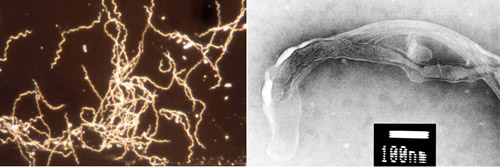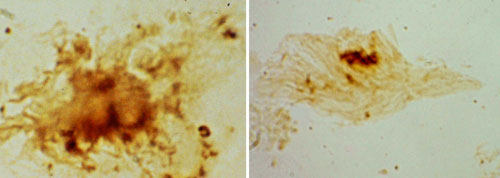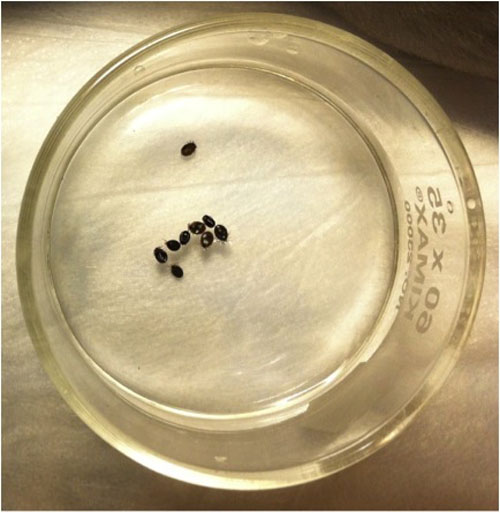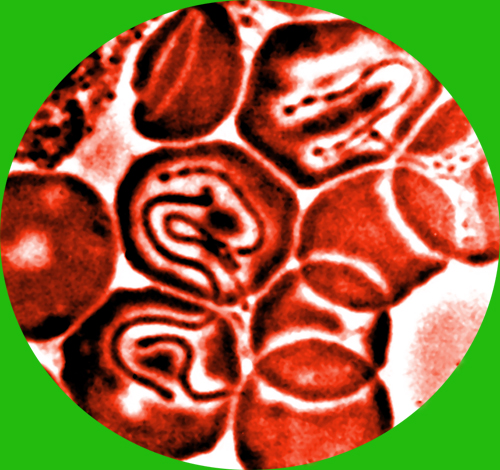
Given that according to the CDC, وہاں ہے 300,000 individuals who are affected annually by Lyme disease in the US, it is astonishing that so little research money has been given to understanding Lyme and tick-borne illnesses in this country and internationally. Much like the syphilis debate in the past, experts have been unable to agree on whether a case definition called late/chronic Lyme disease exists. Yet some Lyme victims, یہاں تک کہ اینٹی بایوٹک کے معیاری علاج لینے کے بعد, continue to suffer from serious long-term health problems for years after they first contract the disease. Like HIV/AIDS in the early 1980s, the world of Lyme has had a small group of dedicated researchers and clinicians who have remained committed to advancing and understanding this disease better.
حصہ میں آج 10 میری عالمی سیریز کا, “Ticks جانوروں”, I am joined by three of these pioneers: ڈاکٹر. برائن فالون, ڈاکٹر. Judith Miklossy and Dr. ایوا SAPI. ڈاکٹر. Sapi is Associate Professor at the University of New Haven (CT) where she carries out Lyme disease research with her graduate students. تاریخ کرنے کے لئے, زائد 70 graduate students have received training in Lyme disease related research. ڈاکٹر. Judith Miklossy is Director of the Alzheimer Research Center in Switzerland. She is an expert in spirochete microbiology and neuropathology. ڈاکٹر. Miklossy serves on the boards of several international Lyme disease foundations. ڈاکٹر. Brian Fallon is Professor of Clinical Psychiatry and Director of the Lyme and Tick-borne Diseases Research Center at Columbia University Medical Center.
برائن, would you please summarize for me what you think tick-borne disease research has accomplished in the last five years?
There have been major advances. We’ve learned from the animal models that the Lyme infection can persist in small numbers despite antibiotic treatment; this has long been suspected by clinicians working with humans – having it demonstrated in several animal models allows us to investigate whether these persistent organisms in the animals are causing disease. We’ve learned from studies of patients with chronic symptoms after treatment for Lyme disease that the immune system is often hyper-activated — that patients have elevated immune activity in the blood and in their spinal fluid. This overactive immune system itself may be leading to the chronic symptoms of fatigue, pain, and cognitive dysfunction. We’ve learned from studies of ticks that about 30% carry more than one pathogen and that the new microbe, Borrelia miyamotoi, can cause a Lyme-like illness that responds to antibiotics but which will not test positive on Lyme testing. This may explain why some patients with a Lyme-like illness never tested positive for Lyme but did get better after antibiotic therapy.

آپ کی تحقیق کا مرکز کیا ہے اور یہ لائم سے متحرک Lyme بیماری کی شناخت اور علاج اور بیماریوں کے چیلنجوں کے لئے کس طرح متعلق ہے?
ایوا: Our research group studies different forms of Borrelia bacteria to better understand how Borrelia can hide from the immune system and from different therapies. مثال کے طور پر, our research group demonstrated that Borrelia is capable of forming a protective layer around itself – called biofilm – which could render it to be very resistant to antibiotics and provide a logical explanation as to why extensive antibiotic treatment for patients with a tick-bite history could fail. Our final goal is to better understand Borrelia survival mechanisms, and ultimately to provide new research information for the chronic Lyme debate. اس سے قبل, our Lyme disease research group has also identified an alarming increase in the co-infection rate in deer ticks, including discovery of novel co-infections such as mycoplasma and microfilarial nematode species.
جوڈتھ: During the last 25 years we studied Borrelia burgdorferi infection in chronic or late Lyme disease. We have published pathological confirmation of the direct involvement of Borrelia burgdorferi in the two major forms of chronic/late Lyme neuroborreliosis, namely the meningovascular form associated with cerebrovascular infarcts and the atrophic form of Lyme meningoencephalitis, associated with cortical atrophy and dementia. We have also reported data on persisting typical as well as atypical and cystic forms of Borrelia burgdorferi in the brains of patients suffering from chronic Lyme neuroborreliosis. We have also shown that Borrelia spirochetes cultivated from the brains of these patients remain virulent and cause apoptosis. مزید برآں, we were able to reproduce in vitro the pathological hallmarks of the atrophic form of chronic Lyme meningoencephalitis.
Whether spirochetes persist in host tissues and play a direct role in the late/chronic manifestations of syphilis was also the subject of a long debate in the history of syphilis. The detection of persisting spirochetes in brains of patients suffering from syphilitic meningoencephalitis (general paresis) ended the debate and confirmed the spirochetal origin of the late/chronic neuropsychiatric manifestations of neurosyphilis.

جوڈتھ, what is your view on the existence of chronic Lyme disease?
آج, the question as to whether Borrelia spirochetes persist is at the center of debate with respect to Lyme disease. In order to solve the debate, we reviewed the substantial amounts of data accumulated during the last 30 years with respect to chronic/late Lyme disease. The data clearly shows that the major late/chronic forms of Lyme neuroborreliosis (meningovascular and meningoencephalitis) were clinically and pathologically confirmed and Borrelia burgdorferi was detected in tertiary brain lesions and/or cultivated from the affected brain or cerebrospinal fluid. These observations were made by many authors and in various countries including the USA and Europe. Borrelia burgdorferi is able to evade destruction by the host immune reactions, persist in host tissues and sustain chronic infection and inflammation. As published in the prestigious Handbook of Clinical Neurology, these observations represent evidences that Borrelia burgdorferi in an analogous way to Treponema pallidum is responsible for the chronic/late manifestations of Lyme neuroborreliosis.
اہم بات یہ ہے, the existence of late Lyme disease is approved by all official guidelines in the U.S., Canada and Europe. The terms “دیر سے” اور “chronic” Lyme بیماری, as in syphilis, are synonymous and define tertiary Lyme disease. The use of “chronic” Lyme disease as a different entity is inaccurate and confusing.
جوڈتھ, to what research do you believe scientists around the world must give priority in order to better treat patients suffering from tick-borne illnesses?
Improvement of existing, and development of new efficient diagnostic tests and therapies for Lyme disease and for the various co-infections is necessary.
Detection of Borrelia burgdorferi in infected tissues and pathological confirmation of the direct role of spirochetal infection in various other chronic/late manifestations of Lyme disease is strongly warranted. Necessity of careful consideration of Borrelia burgdorferi infection in the etiology of stroke, dementia, mood disorders and the various other late/chronic manifestations of Lyme disease would be fundamental.
Despite the fact that antibiotic therapy is less efficient in chronic/late Lyme neuroborreliosis, improvement of the neuropsychiatric symptoms or complete recovery of patients was repeatedly reported, underlying the necessity of an adequate treatment. We should not forget that syphilis was almost completely eradicated by the use of Penicillin.

جوڈتھ, how do we accelerate the research needed for tick-borne illnesses effectively? How can we use technology to do this?
We have all the human experts and technological tools available to further improve and accelerate the research needed for Lyme disease, تاہم, the most important condition, the financial support, is lacking.
Respectful open discussions, exchange and spread of knowledge between experts from all branches of medicine and sciences involved in Lyme disease research would be fundamental.
برائن, what do you believe is possible to accomplish in terms of research results by 2018?
کی طرف 2018, we will have much better diagnostic tests, including tests that will enable us to more sensitively identify current infection. We will have a new vaccine by then – one which is easier to deliver and safer as well. آخر, کی طرف سے 2018, we will have better treatments for patients with chronic symptoms — and we will have biomarkers that help us to choose and target our treatments more appropriately. Patients with chronic symptoms will have many more choices than they do today.
ڈاکٹر مزید معلومات کے لئے. برائن فالون: http://www.columbia-lyme.org/about/researchteam.html
ڈاکٹر مزید معلومات کے لئے. جوڈتھ Miklossy: HTTP://www.miklossy.ch/401/16601.html
ڈاکٹر مزید معلومات کے لئے. ایوا SAPI: http://www.evasapi.net/

Photos are courtesy of Dr. جوڈتھ Miklossy.
زیادہ ہے Ticks مضامین کے لئے: یہاں کلک کریں
تعلیم کے لئے عالمی تلاش میں, سر مائیکل باربر سمیت میرے ساتھ اور عالمی سطح پر معروف فکری رہنماؤں (برطانیہ), ڈاکٹر. مائیکل بلاک (امریکہ), ڈاکٹر. لیون Botstein (امریکہ), پروفیسر مٹی Christensen کے (امریکہ), ڈاکٹر. لنڈا ڈارلنگ-ہیمنڈ (امریکہ), ڈاکٹر. مادھو چوہان (بھارت), پروفیسر مائیکل Fullan (کینیڈا), پروفیسر ہاورڈ گارڈنر (امریکہ), پروفیسر اینڈی Hargreaves نے (امریکہ), پروفیسر کریں Yvonne ہلمین (نیدرلینڈ), پروفیسر کرسٹن Helstad (ناروے), جین Hendrickson نے (امریکہ), پروفیسر گلاب Hipkins (نیوزی لینڈ), پروفیسر Cornelia Hoogland (کینیڈا), فاضل جیف جانسن (کینیڈا), مسز. چینٹل کوفمین (بیلجیم), ڈاکٹر. Eija Kauppinen (فن لینڈ), سٹیٹ سیکرٹری Tapio Kosunen (فن لینڈ), پروفیسر ڈومینک Lafontaine (بیلجیم), پروفیسر ہیو Lauder (برطانیہ), پروفیسر بین لیون (کینیڈا), رب کین میکڈونلڈ (برطانیہ), پروفیسر بیری McGaw (آسٹریلیا), شیو ندار (بھارت), پروفیسر R. نٹراجن (بھارت), ڈاکٹر. PAK NG (سنگاپور), ڈاکٹر. ڈینس پوپ (امریکہ), شریدر رازگوپالن (بھارت), ڈاکٹر. ڈیانے Ravitch (امریکہ), رچرڈ ولسن ریلی (امریکہ), سر کین رابنسن (برطانیہ), پروفیسر Pasi Sahlberg (فن لینڈ), Andreas کی Schleicher (پیسا, او ای سی ڈی), ڈاکٹر. انتھونی Seldon نے (برطانیہ), ڈاکٹر. ڈیوڈ Shaffer کے (امریکہ), ڈاکٹر. کرسٹن عمیق کر رہے ہیں (ناروے), چانسلر اسٹیفن Spahn (امریکہ), ایوز Theze (اسکول Français کی امریکہ), پروفیسر چارلس Ungerleider (کینیڈا), پروفیسر ٹونی ویگنر (امریکہ), سر ڈیوڈ واٹسن (برطانیہ), پروفیسر Dylan کے Wiliam (برطانیہ), ڈاکٹر. مارک Wormald (برطانیہ), پروفیسر تیو Wubbels (نیدرلینڈ), پروفیسر مائیکل نوجوان (برطانیہ), اور پروفیسر Minxuan جانگ (چین) وہ تمام اقوام کو آج سامنا ہے کہ بڑی تصویر تعلیم سوالات دریافت کے طور پر. تعلیم کمیونٹی پیج کے لئے گلوبل تلاش
C. M. روبن وہ ایک موصول ہوئی ہے جس کے لئے دو بڑے پیمانے پر پڑھا سیریز کے مصنف ہے 2011 میں Upton سنکلیئر ایوارڈ, “تعلیم کے لئے گلوبل تلاش” اور “کس طرح پڑھیں گے?” انہوں نے تین bestselling کتابوں کے مصنف ہیں, سمیت Wonderland میں یلس اصلی.






حالیہ تبصرے